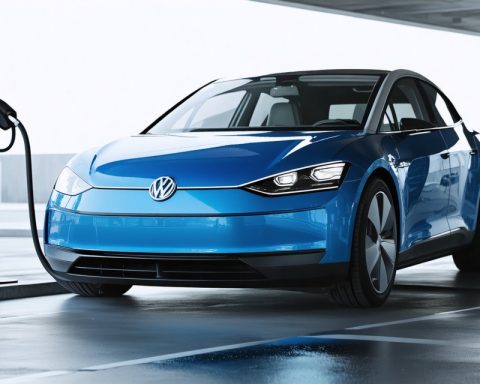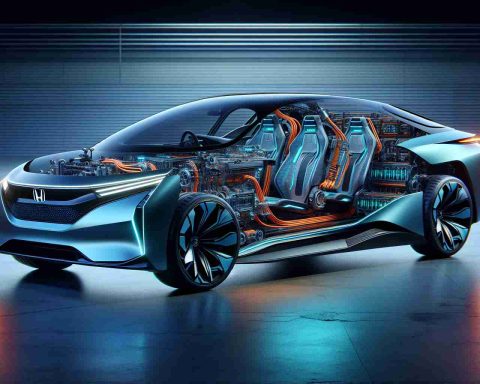- Shenzhen leads the way in electric vehicle infrastructure with its new EV Supercharging Facility Standards System Guide.
- This guide, developed by local authorities and the Shenzhen Energy Storage Standardization Technical Committee, offers a comprehensive blueprint for supercharging station construction and management.
- The initiative covers six key areas and 19 professional fields, focusing on efficiency and accessibility in EV supercharging.
- Shenzhen’s efforts position the city as a global leader in sustainable mobility innovation, setting a benchmark for other cities.
- By integrating innovation with regulation, Shenzhen is shaping the future of electric mobility, making transportation more sustainable.
Shenzhen surges ahead, setting a trailblazing example for the future of electric vehicle (EV) infrastructure. In a bold move to drive innovation, the city unveils China’s first Electric Vehicle Supercharging Facility Standards System Guide, a comprehensive blueprint designed to revolutionize how supercharging stations are constructed and managed. This landmark initiative, orchestrated by the Shenzhen Market Supervision Administration and the city’s Development and Reform Commission, promises to propel Shenzhen to the forefront of sustainable mobility.
The guide isn’t just a series of regulations; it’s a vision for the future. Crafted under the careful eye of the Shenzhen Energy Storage Standardization Technical Committee, this guide capitalizes on Shenzhen’s dynamic EV landscape, seamlessly blending current realities with future ambitions. Delving into six meticulously defined areas—from foundational principles to system equipment, and site construction—it covers an impressive 19 professional fields. Each aspect serves as a critical cog in the machine, geared towards enhancing the efficiency and accessibility of EV supercharging.
This initiative is not merely about keeping pace with technological advancements; it positions Shenzhen as a visionary leader poised to shape global standards in electric mobility. As cities worldwide grapple with the challenges of modern transportation, Shenzhen’s pioneering effort lays down a clear marker: when innovation meets regulation, the road ahead becomes excitingly sustainable.
The takeaway is clear: Shenzhen is not waiting for the future of driving to arrive—it’s building it, supercharged.
Shenzhen Leads the Charge: How Electric Vehicle Supercharging Can Transform Urban Mobility
Overview
In recent years, Shenzhen has emerged as a beacon of innovation in the electric vehicle (EV) sector, setting new benchmarks in EV infrastructure development with the introduction of China’s first “Electric Vehicle Supercharging Facility Standards System Guide.” This initiative aims to standardize supercharging station construction and management, propelling both Shenzhen and China to the forefront of sustainable urban mobility.
Real-World Use Cases
Shenzhen’s model doesn’t just signify progress in China; it offers valuable insights globally:
1. Urban Congestion Mitigation: Supercharging stations reduce charging time significantly, which can help alleviate urban congestion. Other cities can adopt similar standards to manage their traffic flow more efficiently.
2. Increased EV Adoption: By enhancing the accessibility and efficiency of charging infrastructure, Shenzhen fosters increased adoption of EVs, contributing to reduction in carbon emissions.
3. Public-Private Partnerships: The model fosters collaboration between government agencies and private companies. This collaborative approach can be replicated worldwide, encouraging investment and innovation in sustainable transport solutions.
How-To Steps & Life Hacks
If cities or organizations want to emulate Shenzhen’s success, here is a step-by-step approach:
1. Establish Clear Guidelines: Develop comprehensive standards that encompass foundational principles, system equipment, and site construction, similar to Shenzhen’s guide.
2. Engage Stakeholders: Involve local governments, private sector partners, and experts in the field to ensure a diverse range of insights and expertise.
3. Leverage Technology: Invest in state-of-the-art technology for supercharging systems that optimize speed and efficiency.
4. Implement Pilot Projects: Start with pilot projects to test the standards, gather data, and make adjustments before a full-scale rollout.
5. Promote Awareness and Education: Educate the public on the benefits of EVs and supercharging infrastructure to increase acceptance and usage.
Market Forecasts & Industry Trends
The global EV infrastructure market is anticipated to grow rapidly, driven by increasing demand for EVs and supportive government policies. According to a report by MarketsandMarkets, the EV charging station market is projected to grow from USD 5.3 billion in 2021 to USD 30.8 billion by 2026 at a CAGR of 42.4%.
Shenzhen’s initiative will likely accelerate this trend, especially in Asia, where rapid urbanization calls for sustainable transportation solutions.
Pros & Cons Overview
Pros:
– Reduced Charging Times: Supercharged stations cut down charging times from hours to mere minutes.
– Standardization: Creates uniformity and compatibility across the city’s charging infrastructure.
– Environmental Benefits: Supports the transition to cleaner energy by making EVs more practical for everyday users.
Cons:
– High Initial Investment: The development of such standardized systems requires a significant up-front investment.
– Technological Dependence: As with any nascent technology, there is a risk of obsolescence or dependence on proprietary systems.
– Infrastructure Overload: Cities must balance the demand for power with existing grid capabilities to prevent overloads.
Actionable Recommendations
1. Monitor Shenzhen’s Development: Cities can learn valuable lessons by closely monitoring Shenzhen’s implementation and adjustment of supercharging infrastructure standards.
2. Seek Government Support: Collaboration with governmental bodies can unlock funding, rebates, and grants necessary for infrastructure development.
3. Public Engagement: Foster an environment of transparency and community engagement to build public trust and encourage the shift to electric mobility.
Conclusion
Shenzhen’s trailblazing efforts in developing a comprehensive EV supercharging infrastructure highlight a template for cities worldwide aiming to transition to sustainable transportation. By integrating forward-thinking policies, technological advancements, and collaborative efforts, other regions can also pave the way for a more sustainable future.
For more information on Shenzhen’s innovative initiatives, visit China’s Government Portal.
















